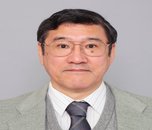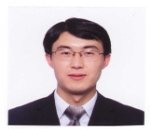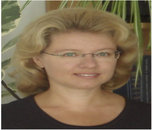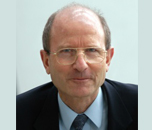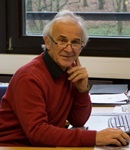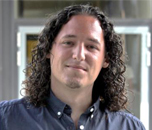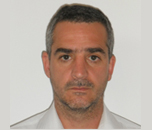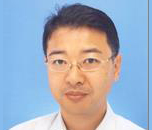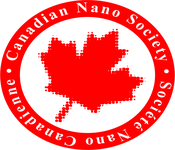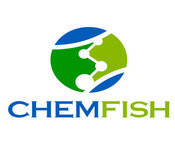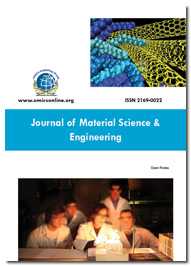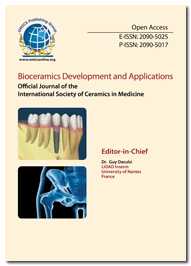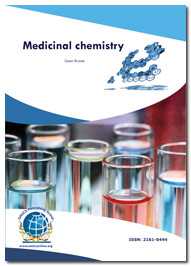Theme: Strategic Approach Leading to Unfolding Tactics in the World of Materials Chemistry
Materials Chemistry 2017
Track 1: Materials Science and Engineering
Material science and engineering, also commonly known as materials science, encompasses the science, chemical engineering and chemical technology of materials and is an integrative subject which gives an idea about the discovery and design of new materials. It deals with studying materials through the materials paradigm (synthesis, structure, properties, and performance). In accordance with chronology, materials are segregated into natural and synthetic and they in turn are divided into inorganic, organic, bulk, micro scale and Nano particles. These various materials exhibit different properties according to their nature. This leads to the advancement in the field of electronics and photonics through basic, potentially transformative materials science research.
Energy materials like photovoltaic cells help in sustaining energy resources. Mining and metallurgical studies involve in the manufacturing processes which convert raw materials into useful products adapted to human needs. It deals with materials-processing, their properties, and their selection and application. Computational Materials Science has a huge scope and calls for hierarchical and multi-scale methods involving modelling, simulation and first-principle calculations on all materials classes.
Optimization processes are particle packing problems, such as how densely hard particles can fill a volume; topology optimization method can be used to determine material microstructures with optimized or targeted properties and the generation of realizations of random heterogeneous materials with specified but limited microstructural information.
Related Chemistry Conferences | Chemistry Meetings | Materials Chemistry
6th International Conference on Medicinal Chemistry & Computer Aided Drug Designing, December 11-13, 2017 Philadelphia, USA; 2nd International Conference on Applied Chemistry, October 16-17, 2017 Paris, France; 4th World Congress on Mass Spectrometry, June 19-21, 2017 London, UK; 4th European Chemistry Congress, May 11-13, 2017 Barcelona, Spain; 2nd European Organic Chemistry Congress, March 2-3, 2017 Amsterdam, Netherlands; Conference on Advanced Composite Materials, January 03-05, 2017 Bangkok, Thailand; International Conference on Metallurgical Fundamentals and Science, January 07-09, 2017 Singapore, Singapore; International Conference on Materials Engineering and Nano Sciences, January 07-09, 2017 Singapore, Singapore; World Symposium on Materials Science and Engineering, January 18-20, 2017 Hong Kong, Hong Kong; International Conference on Nano and Materials Science, January 19-21, 2017 San Diego, USA
Related Societies:
American Chemical Society; American Oil Chemists' Society; American Society of Brewing Chemists; American Society for Mass Spectrometry; Belgian Society of Biochemistry and Molecular Biology; Biochemical Society; Canadian Society for Chemical Technology; Canadian Society of Clinical Chemists; Chemical Society; Chemical Society of Japan; Chemical Society of Nigeria; Chemical Society of Pakistan; Chemical Society of Peru; Chinese-American Chemical Society; Chinese Chemical Society; Chemical Research Society of India
Track 2: Materials Chemistry in Developing Areas
The essence of Materials Chemistry can be observed in various fields i.e., organic, inorganic, analytical, physical, organometallic, cosmetic, petro and forensic studies. Organic chemistry provides organic polymers for use in structures, films, fibres, coatings, and so on. It provides materials with complex functionality, a bridge between materials science and medicine and provides a sophisticated synthetic entry into nanomaterial. Inorganic chemistry deals with the structure, properties, and reactions of molecules that do not contain carbon, such as metals. It helps us to understand the behaviour and the characteristics of inorganic materials which can be altered, separated, or used in products, such as ceramics and superconductors. Analytical chemistry determines the structure, composition, and nature of substances, by identifying and analysing their various elements or compounds. It also gives idea about relationships and interactions between the parts of compounds. It has a wide range of applications, like food safety, Nano biopharmaceuticals, and pollution control. The analytical role of materials chemistry includes the materials science lab equipment associated with materials science experiments. The basic characteristics of how matter behaves on a molecular and atomic level and how chemical reactions occur are physical chemistry. Based on the inferences, new theories are developed, such as how complex structures are formed and develop potential uses for new materials correlating materials chemistry. Study of chemical compounds containing at least one bond between a carbon atom of an organic compound and a metal, including alkaline, alkaline earth, transition metal, and other cases is Organometallic chemistry. Materials that work physiologically within the skin or aid in protecting the skin from insult form Cosmetic chemistry. Petro chemistry deals with the transformation of crude oil (petroleum) and natural gas into useful products or raw materials. Forensic chemistry is the application of chemistry and its subfield, forensic toxicology, in a legal setting.
Related Chemistry Conferences | Chemistry Meetings | Materials Chemistry
3rd International Conference on Organic Chemistry, July 24-26, 2017 Chicago, Illinois, USA; Global Conference on Physical Chemistry, April 17-18, 2017 Las Vegas, USA; International Conference on Photochemistry and Spectroscopy, June 29-30, 2017 Baltimore, USA; International Conference on Electrochemistry, July 10-11, 2017 Berlin, Germany; 2nd International Conference on Applied Chemistry, October 16-17, 2017 Paris, France; 5th International Conference on Chemical, Agricultural, Biological and Environmental Sciences, April 18-19, 2017 Kyoto, Japan; 4th International Conference on Chemical and Food Engineering, March 28-30, 2017 Osaka, Japan; 2nd Advances in Chemical Engineering and Chemistry Research International Conference 2017, May 05-06, 2017 Bandung, Indonesia; 2nd International Conference on Mining, Material and Metallurgical Engineering, March 17-19, 2017 Bangkok, Thailand; 7th International Conference on Key Engineering Materials, March 11-13, 2017 Penang, Malaysia
Related Societies:
Danish Chemical Society; The Electrochemical Society; Faraday Society; Society of German Chemists; Hungarian Chemical Society; Indian Chemical Society; Italian Chemical Society; The Korean Chemical Society; Norwegian Chemical Society; Polish Chemical Society; Royal Netherlands Chemical Society; Royal Society of Chemistry; Chemical Society of France; Society of Chemical Industry; Society of Chemical Manufacturers and Affiliates; Society of Cosmetic Chemists
Track 3: Formulating Materials Chemistry
Materials science and pharmaceutical chemistry are disciplines at the intersection of chemistry, especially synthetic organic chemistry, and pharmacology and various other biological specialties, where they are involved with design, electrochemical synthesis and development for market of pharmaceutical agents, or bio-active molecules (drugs).
Compounds used as medicines are most often organic compounds, which are often divided into the classes of small organic molecules (e.g., atorvastatin) and "biologics" (erythropoietin, insulin), the latter of which are most often medicinal preparations of proteins (natural and recombinant antibodies, hormones, etc.). Inorganic and organic compounds are also useful as drugs (e.g., lithium and platinum-based agents such as lithium carbonate and cis-platin.
Identification of new drugs, often called "hits", which are typically found by assay of compounds for a desired biological activity. Further synthesis of the formulations needs the analysis of SAR for the desired mechanism of action. If not chemical alterations of excipients in formulations can be done for better effects. Biomaterials are used to treat joint replacements, heart valves, breast implants.
Related Chemistry Conferences | Chemistry Meetings | Materials Chemistry
9th International Conference and Exhibition on Analytical & Bioanalytical Techniques, October 2-4, 2017 Atlanta, USA; 2nd International Conference and Expo on Separation Techniques, October 23-25, 2017 Paris, France; 2nd International Conference on Pharmaceutical Chemistry, October 05-07, 2017 Valencia, Spain; 2nd International Conference and Exhibition on Polymer Chemistry, November 06-08, 2017 Chicago, USA; 6th International Conference on Medicinal Chemistry & Computer Aided Drug Designing, December 11-13, 2017 Philadelphia, USA; 8th International Conference on Biotechnology and Food Science, April 11-13, 2017 Seoul, South Korea; 2nd International Conference on Pharmacy and Pharmaceutical Science, April 11-13, 2017 Seoul, South Korea; 7th International Conference on Biomedical Engineering and Technology, April 24-26, 2017 Kuala Lumpur, Malaysia; 2nd International Conference on Advances on Clean Energy Research, April 07-09, 2017 Berlin, Germany; 13th International Conference on Healthcare and Life Science Research, May 26-27, 2017 Lisbon, Portugal
Related Societies:
Swedish Chemical Society; American Society for Bone and Mineral Research; Brazilian Chemical Society; Chemical Society of Mexico; Federation of European Biochemical Societies; Iranian Chemists Association; Italian Chemical Society; Korean Chemical Society; The Society for Electroanalytical Chemistry; Society of Biological Inorganic Chemistry; Society of Polymer Science; Spanish Royal Society of Chemistry; American Society for Biochemistry and Molecular Biology; Australasian Society of Clinical and Experimental Pharmacologists and Toxicologists; Australian Physiological and Pharmacological Society; Austrian Pharmacological Society
Track 4: Materials Synthesis and Characterization
Certain principles are there to synthesize a novel material : to develop an understanding of different materials systems, to know the origins of physical, chemical, and functional properties of different materials, to study basic principles of synthesis and characterization of materials, to understand the origins of functional responses of materials and also the role of materials in science, industry, and technology. Often a pure substance needs to be isolated from a mixture or after chemical reactions (which often give mixtures of chemical substances). From ores, extraction can be done by means of oxidation catalysis and reduction whereas in laboratory by techniques like Hydraulic Washing, Magnetic Separation, Froth Floatation Method, Leaching and so on.
A ceramic is a non-metallic material composed of inorganic molecules, generally prepared by heating a powder or slurry and glassy materials are hard, brittle, and not crystalline which results in optical transparency. Solid state chemistry, also sometimes referred to as materials chemistry is the study of the synthesis, structure, and properties of solid phase materials, particularly, but not exclusively of, non-molecular solids. Thus it has a strong overlap with solid-state physics, mineralogy, crystallography, ceramics, metallurgy, thermodynamics, materials science and electronics with a focus on the synthesis of novel materials and their characterization. Mixtures of metallic materials are called alloys, are more commonly used than the pure metal. By alloying, some of the key properties of metals can be altered. Composite materials are mixtures of two or more bonded materials. The design and synthesis of these materials with different approaches can be done here.
Related Chemistry Conferences | Chemistry Meetings | Materials Chemistry
International Conference on Functional Energy Materials, December 06-07, 2017 Atlanta, USA; 13th International Conference and Exhibition on Materials Science and Engineering, November 13-15, 2017 Las Vegas, USA; 3rd International Conference on Smart Materials & Structures, March 20-22, 2017 Orlando, FL, USA; 9th World Congress on Materials Science and Engineering, June 12-14, 2017 Rome, Italy; 7th Annual Congress on Materials Research and Technology, February 20-21, 2017 Berlin, Germany; Materials Characterisation 2017, June 21-23, 2017 Tallinn, Estonia; 2nd International Conference on Design, Materials and Manufacturing, June 23-25, 2017 Beijing, China; 8th International Conference on Material and Manufacturing Technology, May 04-06, 2017 Singapore, Singapore; 2nd International Conference on Materials Engineering and Nanotechnology, May 12-14, 2017 Kuala Lumpur, Malaysia; 2nd International Conference on Carbon Materials Science and Technology, May 12-14, 2017 Kuala Lumpur, Malaysia
Related Societies:
Bolivian Chemical Society; Brazilian Society of Pharmacology and Experimental Therapeutics; Brunei Chemical Society; Bulgarian Chemical Society; Chemical Society of Thailand; Chemical Society of the South Pacific; Chemical Society of Turkey; Chemical Society of Vietnam; Croatian Chemical Society; Czech Chemical Society; Estonian Chemical Society; European Chemical Society; European Society for Medical Oncology; Federation of African Societies of Chemistry; Indonesia Chemical Society; Hong Kong Chemical Society
Track 5: Insilico Materials Chemistry
Insilico Materials Chemistry deals with the understanding, prediction, and designing of new materials and chemistry based on computer simulations. The main function is the key to development of new materials and chemistry. To design a material for a specific function, one needs to account for interaction, energetics, and dynamics to simulate the process. Modern computational software and hardware now allow us to design materials, predict structures, and simulate function for some well-defined systems, indicating the great potential of materials design for complex systems in the near future. To be able to search for structural elements, chemical databases store the molecular topology (the atoms and their connections) in a handy way and each in a different way. Homology modeling refers to constructing an atomic-resolution model of the "target" protein from its amino acid sequence and an experimental three-dimensional structure of a related homologous protein (the "template") in which docking is a method which predicts the preferred orientation of one molecule to a second when bound to each other to form a stable complex.
In this process, 3D structure databases were selected and subjected to Molecular / Homology modeling whereas small molecule databases and molecular fragments were directly screened for the designing process. The modeling of In situ drug design includes the Docking and screening process which were undergone experimental assay involving a ligand based - pharmacophore. Understanding structure-property relationships is fundamental to the chemistry of materials and key to realizing materials’ functions. Finally the newly designed molecules were processed for Target Prediction using the optimization techniques and molecule will be selected based on the results obtained from ADME / Toxicity estimation. These chemical synthetic methods that make it possible to prepare a large number (tens to thousands or even millions) of compounds in a single process come under the concept of Combinatorial chemistry. These compound libraries can be made as mixtures, sets of individual compounds or use of chemical structures generated by computer software.
Related Chemistry Conferences | Chemistry Meetings | Materials Chemistry
2nd World Congress on Chromatography, August 14-16, 2017 Las Vegas, USA; 2nd International Conference on Nuclear Chemistry, October 16-18, 2017 Las Vegas, USA; 6th International Conference on Medicinal Chemistry & Computer Aided Drug Designing, December 11-13, 2017 Philadelphia, USA; 2nd International Conference on Clinical Chemistry and Laboratory Medicine, December 04-06, 2017 Atlanta, USA; International Conference on Chemical Biology, November 2-3, 2017 Las Vegas, USA; Computational Methods and Experimental Measurements 2017, July 04-06, 2017 Alicante, Spain; World Congress on Drug Discovery and Development – 2017, September 20-22, 2017 West Bengal, India; 6th International Conference on Manufacturing Engineering and Process, May 27-29, 2017 Lisbon, Portugal; 2nd International Conference on Smart Materials Technologies, May 19-21, 2017 St. Petersburg, Russian Federation; International Conference on Mechanical Automations and Control Engineering, March 29-31, 2017 Jeju Island, South Korea
Related Societies:
International Isotope Society; International Society of Heterocyclic Chemistry; Jordanian Chemical Society; Kuwaiti Chemical Society; Latvian Chemical Society; Lithuanian Chemical Society; Malawi Chemical Society; Mendeleev Chemical Society; Mexican Chemical Society; Mongolian Chemical Society; New Swiss Chemical Society; New Zealand Institute of Chemistry; Pharmaceutical Society of Australia; Pharmaceutical Society of Ireland; Radiological Society of North America; Romanian Chemical Society
Track 6: Regenerative Materials Chemistry
Materials chemistry is making a fundamental impact in regenerative sciences providing many platforms for tissue development. However, there is a surprising paucity of replacements that accurately mimic the structure and function of the structural fabric of tissues or promote faithful tissue reconstruction. Biomaterials are any matter, surface, or construct either from nature or synthesized in the laboratory and that interacts with biological systems. In biomimetic study, the structure and function of biological systems were taken as models and employed in the design and engineering of materials. Tissue Engineering involves the developmental approaches to control cell behavior through the nanoscale engineering of materials surfaces including monolayer protected metal, nanotubes and other nanotopographies/ nanochemistries. A Bioactive compound shows a specific effect on the living tissue of an organism which is biodegradable in nature. Biomineralization is the process by which living organisms produce minerals, often to harden or stiffen existing tissues. A Tunable material shows a variable response to an incident electromagnetic wave with the combination of a metamaterial. Light harvesting is the study of materials and molecules that capture photons of solar light. This includes studies to better understand the light-harvesting properties of photosynthetic organisms.
Related Chemistry Conferences | Chemistry Meetings | Materials Chemistry
International Conference on Chemical Biology, November 2-3, 2017 Las Vegas, USA; 2nd International Conference on Nuclear Chemistry, October 16-18, 2017 Las Vegas, USA; 2nd International Conference on Clinical Chemistry and Laboratory Medicine, December 04-06, 2017 Atlanta, USA; 3rd International Conference and Expo on Separation Techniques, October 23-25, 2017 Paris, France; International Conference on Environmental Chemistry, July 27-28, 2017 Rome, Italy; 13th International Conference on Healthcare and Life Science Research, May 26-27, 2017 Lisbon, Portugal; 8th International Conference on Biotechnology and Food Science, April 11-13, 2017 Seoul, South Korea; 13th International Conference on Researches in Science and Technology, May 25-26, 2017 Lisbon, Portugal; 13th International Conference on Envirotech, Cleantech and Greentech, May 25-26, 2017 Lisbon, Portugal; 2nd International Conference on Pharmacy and Pharmaceutical Science, April 11-13, 2017 Seoul, South Korea
Related Societies:
American Chemical Society; American Oil Chemists' Society; American Society of Brewing Chemists; American Society for Mass Spectrometry; Belgian Society of Biochemistry and Molecular Biology; Biochemical Society; Canadian Society for Chemical Technology; Canadian Society of Clinical Chemists; Chemical Society; Chemical Society of Japan; Chemical Society of Nigeria; Chemical Society of Pakistan; Chemical Society of Peru; Chinese-American Chemical Society; Chinese Chemical Society; Chemical Research Society of India
Track 7: Polymer Materials and Technology
Polymer chemistry is a multidisciplinary science that deals with the chemical synthesis and chemical properties of polymers which were considered as macromolecules. Polymers describe the bulk properties of polymer materials and belong to the field of polymer physics as a subfield of physics. Polymers are of two types-natural ( e.g., rubber, amber ), synthetic ( e.g., polyethylene, nylon, PVC ). Polymerization is the process of combining many small molecules known as monomers into a covalently bonded chain or network. General methods of synthesis include-Biological synthesis and also by modification of natural polymers. Laboratory research is generally divided into two categories, step-growth polymerization and chain-growth polymerization. Polymers are characterized by the presence of monomer units and microstructures and they can be determined by means of many lab techniques. Surface functionalization of a polymer structure is the key component of a coating formulation allowing control over such properties as dispersion, film formation temperature, and the coating rheology. The association of other additives, such as thickeners with adsorbed polymer material give rise to complex rheological behaviour and excellent control over a coating's flow properties.
Polymer blends are members of a class of materials analogous to metal alloys, in which at least two polymers are blended together to create a new material with different physical properties. A polymer alloy includes multiphase copolymers but excludes incompatible polymer blends. These materials combine high modulus, heat resistance and impact strength in addition to flame retardant. Polymer processing is done by extrusion and injection moulding; other processes include calendering, compression. Polymer testing capabilities include advanced trace chemical analysis, diverse analytical capabilities and identification of chemicals composition, unknown materials and chemical contamination. It is used to identify fundamental structural information including molecular weight, molecular weight distribution and information on branching. Polymers are manufactured under pressured conditions, pressureless conditions and so on.
Related Chemistry Conferences | Chemistry Meetings | Materials Chemistry
2nd International Conference and Exhibition on Polymer Chemistry, November 06-08, 2017 Chicago, USA; 2nd World Congress on Polymer Science and Engineering, May 8-9, 2017 Barcelona, Spain; 3rd International Conference on Smart Materials & Structures, March 20-22, 2017 Orlando, FL, USA; International Conference on Functional Energy Materials, December 07-09, 2017 Atlanta, USA; International Conference on Diamond and Carbon Materials, July 17-19, 2017 Chicago, USA; IUPAC International Conference on Advanced Polymeric Materials, October 04-07, 2017 Jeju Island, South Korea; International Conference on Innovation in Polymer Science and Technology 2016, November 07-09, 2016 North Sumatera, Indonesia; 36th Australasian Polymer Symposium, November 20-23, 2016 North Sumatera, Indonesia; Materials Characterisation 2017, June 21-23, 2017 Tallinn, Estonia; 2nd International Conference on Design, Materials and Manufacturing, June 23-25, 2017 Beijing, China
Related Societies:
Danish Chemical Society; The Electrochemical Society; Faraday Society; Society of German Chemists; Hungarian Chemical Society; Indian Chemical Society; Italian Chemical Society; The Korean Chemical Society; Norwegian Chemical Society; Polish Chemical Society; Royal Netherlands Chemical Society; Royal Society of Chemistry; Chemical Society of France; Society of Chemical Industry; Society of Chemical Manufacturers and Affiliates; Society of Cosmetic Chemists
Track 8: Applied Materials Chemistry
The effects of ultrasound induce certain physical changes like the dispersal of fillers and other components into base polymers (as in the formulation of paints), the encapsulation of inorganic supplements with polymers, changing of particle size in polymer powders, and most important is the welding and cutting of thermoplastics. In contrast, chemical changes can also be created during ultrasonic irradiation as a result of cavitation, and these effects have been used to favour many areas of polymer chemistry. In materials science, the sol-gel conversionis a method for producing solid materials from small molecules. This method is used for the fabrication of metal oxides particularly the oxides of silicon and titanium. The process involves conversion of monomers into a colloidal solution (sol) that acts as the precursor for an integrated network (or gel) of either discrete particles or network polymers. Important precursors are metal alkoxides. Polymers produced under sonication had narrower poly dispersities but higher molecular weights than those produced under normal conditions. The fastness of the polymerization was caused by more efficient dispersion of the catalyst throughout the monomer, leading to a more homogeneous reaction and hence a lower distribution of chain lengths. The electrical and magnetic phenomena alter the properties of materials for better prospective in manufacturing. Plastic fabrication is the design, manufacture and assembly of plastic products through one of a number of methods.
Related Chemistry Conferences | Chemistry Meetings | Materials Chemistry
2nd International Conference on Applied Chemistry, October 16-17, 2017 Paris, France; 9th International Conference and Exhibition on Analytical & Bioanalytical Techniques, October 2-4, 2017 Atlanta, USA; International Conference on Environmental Chemistry, July 27-28, 2017 Rome, Italy; 4th European Chemistry Congress, May 11-13, 2017 Barcelona, Spain; 2nd International Conference on Nuclear Chemistry, October 16-18, 2017 Las Vegas, USA; 2nd International Conference on Building Materials and Construction, February 25-27, 2017 Hanoi, Vietnam; International Conference on Biomacromolecules and Biomimetic Materials, March 06-12, 2017 Boracay, Philippines; International Conference on Healthcare, Applied Science and Engineering, March 19-20, 2017 Madrid, Spain; International Conference on Healthcare, Applied Science and Engineering, March 17-18, 2017 Vienna, Austria; 4th International Conference on Petroleum and Petrochemical Engineering, January 21-23, 2017 Bangkok, Thailand
Related Societies:
Swedish Chemical Society; American Society for Bone and Mineral Research; Brazilian Chemical Society; Chemical Society of Mexico; Federation of European Biochemical Societies; Iranian Chemists Association; Italian Chemical Society; Korean Chemical Society; The Society for Electroanalytical Chemistry; Society of Biological Inorganic Chemistry; Society of Polymer Science; Spanish Royal Society of Chemistry; American Society for Biochemistry and Molecular Biology; Australasian Society of Clinical and Experimental Pharmacologists and Toxicologists; Australian Physiological and Pharmacological Society; Austrian Pharmacological Society
Track 9: Materials Chemistry and Physics
Materials Chemistry along with Physics deals with the structure, properties, processing and performance of materials. Applied physics is intended for a particular technological or practical use of materials. Materials characterization is a broad and general process by which a material's structure and properties are probed and measured. Materials characterization usually done by the major techniques like Microscopy, spectroscopy, macroscopic testing. The scale of the structures observed in materials characterization ranges from angstroms, such as in the imaging of individual atoms and chemical bonds, up to centimeters, such as in the imaging of coarse grain structures in metals.
Materials Management and engineering focus on improving what materials are made of and how they are made. New materials enable better performance and sustainable technologies. It is always new materials that open the door to new technologies, whether they are in chemical, civil, construction, nuclear, aeronautical, agricultural, mechanical, and biomedical or electrical engineering. In this the mechanics of materials are evaluated for the better performance of the newly designed materials and general areas of dynamics of particles and rigid bodies and the mechanics of deformable solids. Strength of materials is also analysed for the future prospective and effective material construction like Organic Lunimophores and so on. Creating competitive advantage through material technologies and developments which lead to new applications comes under Functional Materials Chemistry. The concept of Materials Science and physics involves certain materialistic methodologies such as materials science quantum mechanics and other related concepts.
Related Chemistry Conferences | Chemistry Meetings | Materials Chemistry
Annual Meeting on Forensic Chemistry, May 1-3, 2017 Barcelona, Spain; Global Conference on Physical Chemistry, April 17-18, 2017 Las Vegas, USA; International Conference on Photochemistry and Spectroscopy, June 29-30, 2017 Baltimore, USA; 2nd International Conference on Industrial Chemistry and Water Treatment, May 22-23, 2017 Las Vegas, USA; International Conference and Expo on Separation Techniques, October 23-25, 2017 Paris, France; Materials Characterisation 2017, June 21-23, 2017 Tallinn, Estonia; 2nd International Conference on Design, Materials and Manufacturing, June 23-25, 2017 Beijing, China; 8th International Conference on Material and Manufacturing Technology, May 04-06, 2017 Singapore, Singapore; 2nd International Conference on Materials Engineering and Nanotechnology, May 12-14, 2017 Kuala Lumpur, Malaysia; 2nd International Conference on Carbon Materials Science and Technology, May 12-14, 2017 Kuala Lumpur, Malaysia
Related Societies:
Bolivian Chemical Society; Brazilian Society of Pharmacology and Experimental Therapeutics; Brunei Chemical Society; Bulgarian Chemical Society; Chemical Society of Thailand; Chemical Society of the South Pacific; Chemical Society of Turkey; Chemical Society of Vietnam; Croatian Chemical Society; Czech Chemical Society; Estonian Chemical Society; European Chemical Society; European Society for Medical Oncology; Federation of African Societies of Chemistry; Indonesia Chemical Society; Hong Kong Chemical Society
Track 10: Nanomaterials
A material having particles or constituents of nanoscale dimensions, or one that is produced by nanotechnology is a Nanomaterial. They are of types like carbon based, metal based, dendrimers and composites. Useful applications can be observed in the cases of nanomedicine, nanobiotechnology, green nanotechnology, energy applications of nanotechnology, industrial applications of nanotechnology, potential applications of carbon nanotubes and nanoart. The characteristic properties of nanomaterials show wide usage in the current trending technology of material design. The general methods of synthesis are Bottom-Up approach which includes the chaotic and controlled processes and Top-Down approach which includes various methods of nanolithography. Current applications of nanoscale materials include very thin coatings used, for example, in electronics and active surfaces (for example, self-cleaning windows). In most applications the nanoscale components will be fixed or embedded but in some, such as those used in cosmetics and in some pilot environmental remediation applications, free nanoparticles are used. The ability to machine materials to very high precision and accuracy (better than 100nm) is leading to considerable benefits in a wide range of industrial sectors, for example in the production of components for the information and communication technology, automotive and aerospace industries.
Magnetically tunable photonic structures are prepared in alkanol solutions by using silica-modified super paramagnetic Fe3O4 colloids as building blocks. Repulsive electrostatic and magnetically induced attractive forces contribute to the ordering of the Fe3O4 @ SiO2 colloids. The ability to form tunable photonic structures in non-aqueous solutions allows the fabrication of field-responsive polymer composite materials films for potential applications as displays and sensors. Metal-organic frameworks (MOFs) are materials in which metal – to-organic ligand interactions yield porous coordination networks with record-setting surface areas surpassing activated carbons and zeolites. They are used in the storage and separations of gases, catalysis and others. There are two major methods to construct DNA Nano structures, the tile-based and DNA origami methods. The tile-based approach is an ancient method that provides a good tool to construct small and simple structures, usually with multiple repeated domains. In contrast, the origami method, at present, would appear to be more appropriate for the construction of bigger, more sophisticated and defined structures which facilitate molecular modelling.
In the past decade, lithium-ion (Li-ion) batteries have been considered as one of the viable alternative technologies for applications such as electrical vehicles and grid energy storage for renewable energies (e.g., solar and wind) due to their high energy density and long cycle life. Recent nanotechnology leads to the development of advanced electrode materials for high-performance Li-ion batteries. The recent advances are in graphene-based composites and their application as cathode materials for Li-ion batteries. They focus on the synthetic methods of graphene-based composites and their superior electrochemical performance in Li-ion batteries. Advances in oxide semiconductor materials and devices continue to fuel leading edge developments in display technology, and transparent electronics. Nano crystalline oxide semiconductor offers a host of advantages such as low cost and high scalability. In semiconductor device applications, oxide semiconductors stem from a number of attributes primarily their ease of processing, and high field effect mobility, rising in stackable process nature on silicon circuits.
Related Chemistry Conferences | Chemistry Meetings | Materials Chemistry
2nd World Congress and Expo on Graphene & 2D Materials, August 14-15, 2017 Edinburgh, Scotland; 14th International Conference on Nanomaterials and Nanotechnology, March 30- 31, 2017 Madrid, Spain; 17th Nanotechnology Products and Expo, September 17-18, 2017 Seoul, South Korea; 19th Nano Congress for Next Generation, August 31-September 01, 2017 Brussels,Belgium; 19th International Conference on Nanotek and Expo, November 13-14, 2017 Chicago, USA; 2nd International Conference on Smart Materials Technologies, May 19-21, 2017 St. Petersburg, Russian Federation; International Conference & Exhibition on Advanced & Nano Materials, August 07-09, 2017 Toronto, Canada; International Conclave on Smart Science and Engineering, July 22-23, 2017 Rajasthan, India; 3rd Annual International Conference on Nano Science and Nanotechnology, December 15-16, 2016 Colombo, Sri Lanka; 5th International Conference on Nano and Materials Science, January 19-21, 2017 San Diego, USA
Related Societies:
International Isotope Society; International Society of Heterocyclic Chemistry; Jordanian Chemical Society; Kuwaiti Chemical Society; Latvian Chemical Society; Lithuanian Chemical Society; Malawi Chemical Society; Mendeleev Chemical Society; Mexican Chemical Society; Mongolian Chemical Society; New Swiss Chemical Society; New Zealand Institute of Chemistry; Pharmaceutical Society of Australia; Pharmaceutical Society of Ireland; Radiological Society of North America; Romanian Chemical Society
Track 11: Current Innovations in Materials Chemistry
Nanostructures deal with objects and structures that are in the 1—100 nm range. In many materials, atoms or molecules cluster together to form objects at the nanoscale. This leads to interesting electromagnetic, optical and mechanical properties. The term 'nanostructure' is often used when referring to magnetic technology. Microstructure is defined as the structure of a prepared surface or thin foil of material as revealed by a microscope above 25× magnification. It deals with objects from 100 nm to a few cm. Most of the traditional materials (such as metals and ceramics) are micro structured. Macrostructure is the appearance of a material in the scale millimetres to meters—it is the structure of the material as seen with the naked eye. Atomic structure deals with the atoms of the materials and how they are arranged to give structure of molecules, crystalline solidsetc., The length scales involved are in angstroms (0.1 nm). The way in which the atoms and molecules are bonded and arranged is fundamental to studying the properties and behaviour of any material. Crystallography is the science that examines the arrangement of atoms in crystalline solids. Crystallography is very much useful for materials scientists. Polymers display varying degrees of crystallinity and many are completely non-crystalline. Glass, some ceramics, and many natural materials are amorphous, not possessing any long-range order in their atomic nuclei.
Related Chemistry Conferences | Chemistry Meetings | Materials Chemistry
3rd International Conference on Organic Chemistry, July 24-26, 2017 Chicago, Illinois, USA; Global Conference on Physical Chemistry, April 17-18, 2017 Las Vegas, USA; International Conference on Photochemistry and Spectroscopy, June 29-30, 2017 Baltimore, USA; International Conference on Electrochemistry, July 10-11, 2017 Berlin, Germany; 2nd International Conference on Applied Chemistry, October 16-17, 2017 Paris, France; 5th International Conference on Nano and Materials Engineering, April 01-03, 2017 Bali, Indonesia; 4th World Congress and Expo on Nanotechnology and Materials Science, April 05-07, 2017 Madrid, Spain; 4th International Conference on Industrial Engineering and Applications, April 27-29, 2017 Nagoya, Japan; 2nd International Conference on Green Energy and Applications, March 25-27, 2017 Singapore, Singapore; 2nd International Conference on Mechatronics Engineering and Automation, March 17-19, 2017 Bangkok, Thailand
Related Societies:
American Chemical Society; American Oil Chemists' Society; American Society of Brewing Chemists; American Society for Mass Spectrometry; Belgian Society of Biochemistry and Molecular Biology; Biochemical Society; Canadian Society for Chemical Technology; Canadian Society of Clinical Chemists; Chemical Society; Chemical Society of Japan; Chemical Society of Nigeria; Chemical Society of Pakistan; Chemical Society of Peru; Chinese-American Chemical Society; Chinese Chemical Society; Chemical Research Society of India
Track 12: Research Aspects of Materials Chemistry
Surface science is the study of physical and chemical phenomena that occur at the interface of two phases along with solid–liquid interfaces, solid–gas interfaces, solid–vacuum interfaces, and liquid–gas interfaces. It is closely related to study of surface, which targets at modifying the chemical composition of a surface by incorporation of selected elements or functional groups that produce various desired effects or improvements in the properties of the surface or interface. Biomedical materials are prepared from tissue engineering for the compatibility in the human body. Optoelectronics is the study and application of electronic devices that source, detect and control light, usually considered as a sub-field of photonics. These devices are electrical-to-optical or optical-to-electrical transducers, or instruments that use such devices in their operation. It is based on the quantum mechanical effects of light on electronic materials, especially semiconductors, occasionally in the presence of electric fields. Superconductivity is a phenomenon of exactly zero electrical resistance and expulsion of magnetic fields occurring in certain materials when cooled below a characteristic critical temperature. Superconducting materials are some of the most powerful electromagnets known. They are used in MRI/NMR machines, mass spectrometers, and beam-steering magnets used in particle accelerators. Molecular electronics is the study and application of molecular building blocks for the fabrication of electronic materials. Carbon nanotubes (CNTs) are allotropes of carbon with a cylindrical nanostructure. These carbon molecules have unusual properties, which are valuable for nanotechnology, electronics, optics and other fields of materials science and technology. Owing to their extraordinary thermal conductivity and mechanical and electrical technologies, carbon nanotubes act as additives to various structural materials.
Related Chemistry Conferences | Chemistry Meetings | Materials Chemistry
6th International Conference on Medicinal Chemistry & Computer Aided Drug Designing, December 11-13, 2017 Philadelphia, USA; 2nd World Congress and Expo on Graphene & 2D Materials, August 14-15, 2017 Edinburgh, Scotland; 7th Annual Congress on Materials Research and Technology, February 20-21, 2017 Berlin, Germany; International Conference on Chemical Biology, November 2-3, 2017 Las Vegas, USA; Global Conference on Physical Chemistry, April 17-18, 2017 Las Vegas, USA; 12th International Conference on Researches in Science and Technology, December 08-09, 2016 Kuala Lumpur, Malaysia; 8th International Conference on Researches in Science and Technology, December 20-21, 2016 Dubai, UAE; 5th International Conference on Nano and Materials Science, January 19-21, 2017 San Diego, USA; 3rd International Conference on Renewable Energy Technologies, January 22-24, 2017 Bangkok, Thailand; International Conference on Energy and Environmental Science, January 22-24, 2017 Bangkok, Thailand
Related Societies:
Danish Chemical Society; The Electrochemical Society; Faraday Society; Society of German Chemists; Hungarian Chemical Society; Indian Chemical Society; Italian Chemical Society; The Korean Chemical Society; Norwegian Chemical Society; Polish Chemical Society; Royal Netherlands Chemical Society; Royal Society of Chemistry; Chemical Society of France; Society of Chemical Industry; Society of Chemical Manufacturers and Affiliates; Society of Cosmetic Chemists
Track 13: Role of Graphene in Advanced Materials
Two-dimensional (2D) materials have attracted much attention in the past decade. They have high specific surface area and also electronic engineering and properties that differ from their bulk counterparts due to the low dimensionality. Graphene is the best known and the most studied 2D material, but metal oxides and hydroxides (including clays), dichalcogenides, boron nitride (BN), and other materials that are one or several atoms thick are receiving increasing attention. They exhibit a combination of properties that cannot be provided by other materials. Many two-dimensional materials are synthesized by selective extraction process which is critically important when the bonds between the building blocks of the material are too strong (e.g., in carbides) to be broken mechanically in order to form Nano structures. These have a thickness of a few nanometres or less. Electrons are free to move in the two-dimensional plane, but their restricted motion in the third direction is governed by quantum mechanics. Magnetic topological insulator comprised of two-dimensional (2-D) materials has a potential of providing many interests and applications by manipulating the surfaces states like yielding quantum anomalous Hall effect giving rise to dissipation-less chiral edge current, giving axion electromagnetism and others. The chemistry of electrical, optical, thermal and mechanical properties varies in a peculiar style and these materials are applied widely in case of ambipolar electronics, transistors and so on.
Related Chemistry Conferences | Chemistry Meetings | Materials Chemistry
14th International Conference on Nanomaterials and Nanotechnology, March 30- 31, 2017 Madrid, Spain; 2nd World Congress and Expo on Graphene & 2D Materials, August 14-15, 2017 Edinburgh, Scotland; International Conference on Functional Energy Materials, December 07-09, 2017 Atlanta, USA; 3rd International Conference on Smart Materials & Structures, March 20-22, 2017 Orlando, FL, USA; 3rd World Chemistry Conference, May 22-24, 2017 Chicago, USA; 7th International Conference on Advanced Materials Research, January 20-22, 2017 Hong Kong, China; International Conference on Metallurgical Fundamentals and Science, January 07-09, 2017 Singapore, Singapore; 2nd International Conference on Composite Materials and Material Engineering, February 17-19, 2017 Chengdu, China; Conference on Advanced Composite Materials, January 03-05, 2017 Bangkok, Thailand; International Conference on Metallurgical Fundamentals and Science, January 07-09, 2017 Singapore, Singapore
Related Societies:
Swedish Chemical Society; American Society for Bone and Mineral Research; Brazilian Chemical Society; Chemical Society of Mexico; Federation of European Biochemical Societies; Iranian Chemists Association; Italian Chemical Society; Korean Chemical Society; The Society for Electroanalytical Chemistry; Society of Biological Inorganic Chemistry; Society of Polymer Science; Spanish Royal Society of Chemistry; American Society for Biochemistry and Molecular Biology; Australasian Society of Clinical and Experimental Pharmacologists and Toxicologists; Australian Physiological and Pharmacological Society; Austrian Pharmacological Society
Chemistry Conferences welcome chemical professionals, researchers, professors, scientific communities, delegates, students, business professionals and executives from all over the world to attend the “2nd International Conference and Exhibition on Materials Science and Chemistry” which is to be held during July 13-14, 2017 at Berlin, Germany which includes prompt Keynote presentations, Oral talks, Poster presentations and Exhibitions.
Materials Chemistry 2017 which is the primordial chemistry conferences serves as a global platform to discuss and learn about Material Science, Material Engineering, pharmaceutical materials chemistry, biomimetic chemistry, chemical syntheses, characterization and processing of novel materials, nanochemistry, applied materials chemistry, super conducting concepts, polymer chemistry, inorganic materials chemistry, organic materials chemistry, analytical materials chemistry, physical materials chemistry and other basic principles involved in Materials Chemistry.
In the light of this theme, the conference series aims to provide a forum for international researchers from various areas of chemistry, pharmacy, materials science and chemical engineering by providing a platform for critical analysis of new designing, and to share latest cutting-edge research findings and results about all aspects of Materials Chemistry. The current meeting of chemistry conferences will be a multinational gathering and present major areas such as surface enhancement, nanotechnology, polymer science and overall applications.
Target Audience:
Materials Chemists
Professors in Chemistry
Associate and Assistant Professors in Materials Chemistry
Post doctorals and Researchers in Chemistry
Heads of Chemical Departments
Post Graduates and Graduates in Materials Chemistry
Laboratory Chemists
Chemical Scientists working on Materials
Experts in the development of Nanostructures
The forecast for R&D growth in the chemical and advanced materials industry reflects the improving global economy and the key markets the industry serves. U.S. R&D spending in chemicals and advanced materials is forecast to grow by 3.6% to reach $12 billion in 2014. Overall global R&D is forecast to grow at a slightly higher 4.7% rate to $45 billion in 2014.The R&D activities within the chemical and advanced materials industry reflects improvements in the U.S. and global economy, and the role this industry plays in support of other demand-driven industries. We forecast U.S. chemical and advanced materials R&D to increase by 3.6% in 2014, reaching $12.2 billion. Worldwide R&D is expected to increase by 4.7% to $45.3 billion.
The global market for abrasive products and materials reached $36.6 billion in 2014. This market is expected to reach $37.8 billion by 2015 and $44.2 billion by 2020, registering a compound annual growth rate (CAGR) of 3.2% from 2015 to 2020.
ConferenceSeries LLC Ltd organizes 1000+ Global events every year across the globe with support from 1000+ more scientific societies and Publishes 700 Open access journals which contains over 50000 eminent personalities, reputed scientists as editorial board members.
The term Materials Chemistry covers various chemical sciences such as inorganic, organic, physical and chemical engineering in which information about the scope of the newly emerging discipline of materials was assembled, collated, and disseminated leading to an authoritative definition of the subject. However the presence of “chemistry” indicates the design, synthesis, processing and utilization of materials. The objective was not so much to produce lists of specific topics or categories of compounds and phenomena, which would quickly become out of date, but to establish some principles that could be deployed by IUPAC and the chemical community. It was recently established that materials with completely new properties can be made using nanoscale manipulation. This poses a major challenge to basic research, but nanoeffects also provide interesting perspectives for new industrial processes and applications. In general, emphasis is placed on the interdisciplinary nature of materials science and issues at the forefront of the field, such as energy and environmental issues, as well as medical and bioengineering applications.
Materials scientists and engineers work in materials process engineering, research and development, quality, technical support, management, technical sales and marketing, and more. Employers range from primary material producers and refiners to utility providers, the transport industry, the defence force, universities, research institutions and multinational technical consultancy firms. There are a multitude of opportunities for scientific and commercial endeavour in the areas of forensics, bio-materials, electronic devices, nano-materials, the environment as well as new and innovative materials and processes.
Why it’s in Berlin, Germany:
Germany’s chemical industry is number one in Europe. As the industry employs almost half a million highly trained staff makes the industry a driving force for innovation. By developing new materials, active pharmaceutical ingredients and high-performance chemicals and plastics, the chemical industry sets the benchmarks for advancing state-of-the-art technologies. This creates benefits for a number of different fields such as energy efficiency, renewables, energy storage, and mobility. Leading international chemical firms choose to locate in Germany. Germany’s central geographical location at the heart of Europe provides a further decisive advantage, giving access to a market of more than 500 million customers in the European Union.
The chemical sector has become one of the basic pillars of the German economy, and is made up of more than 2,000 companies employing approx. 325,000 people. Nearly 60% of the total revenue of around EUR 145 billion is generated abroad. Germany was the fourth largest producer in Europe (after France, Italy and the United Kingdom).
German Market value on Materials Chemistry:
During the period 1960 to 2010, chemical industry revenue in Germany increased from EUR 12 to EUR 171 billion (according to Feri AG and the German Chemical Industry Association-VCI); resulting in an average nominal growth rate of 5.4 per cent per year (real growth rate: 3.1 per cent per annum). Over the same period, the number of employees decreased from 458,000 to 415,000; increasing productivity sixteen-fold indicated by revenue per employee levels of EUR 412,000 in 2010.
Global Market Value on Materials Chemistry:
World chemicals turnover was valued at €3,156 billion in 2013. This marks a slow recovery of the chemical industry compared with 2012. Global sales grew by 2.4 per cent from €3,084 billion in 2012 to €3,156 billion in 2013.The sales growth rate was considerably lower compared to the 10 year trend, when average annual sales expanded by 10.3 per cent from 2003 to 2012.World chemicals sales in 2013 grew by nearly €73 billion compared with 2012, marking a modest recovery in the world chemical industry.
Major Chemical Societies in Germany:
-
German Chemical Society
-
German Bunsen Society for Physical Chemistry
-
German Society for Mass Spectrometry
-
German Society for Clinical Chemistry and Laboratory Medicine
-
Society for Biochemistry and Molecular Biology
-
Association of Electrochemical Research Institutions
-
The Colloid Society
-
German Catalysis Society
-
Society for Chemical Engineering and Biotechnology
-
German Chemical Industry Association E.V
Major International Chemistry Associations:
-
Cooperation on International Traceability in Analytical Chemistry
-
Electrochemical Society
-
European Association for Chemical and Molecular Sciences
-
European Colloid and Interface Society
-
European Federation for Medicinal Chemistry
-
European Federation of Chemical Engineering
-
European Precious Metals Federation
-
Federation of Asian Chemical Societies
-
International Association of Catalysis Societies
-
International Association of Nanotechnology
For more information about Materials Chemistry Market Analysis PS: Materials Chemistry Market Analysis
Conference Highlights
- Materials Science and Engineering
- Materials Chemistry in Developing Areas
- Formulating Materials Chemistry
- Materials Synthesis and Characterization
- Insilico Materials Chemistry
- Regenerative Materials Chemistry
- Polymer Materials and Technology
- Applied Materials Chemistry
- Current Innovations in Materials Chemistry
- Research Aspects of Materials Chemistry
- Role of Graphene in Advanced Materials
- Materials Chemistry and Physics
- Nanomaterials
To share your views and research, please click here to register for the Conference.
To Collaborate Scientific Professionals around the World
| Conference Date | July 13-14, 2017 | ||
| Sponsors & Exhibitors |
|
||
| Speaker Opportunity Closed | Day 1 | Day 2 | |
| Poster Opportunity Closed | Click Here to View | ||
Useful Links
Special Issues
All accepted abstracts will be published in respective Our International Journals.
- Journal of Material Sciences & Engineering
- Journal of Powder Metallurgy & Mining
- Bioceramics Development and Applications
Abstracts will be provided with Digital Object Identifier by









